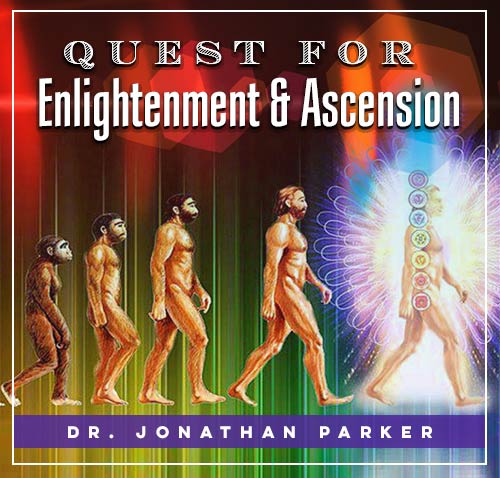Understanding Mahayana: Path to Universal Enlightenment

Hey there, amazing readers! 🖐️ Just a quick note: yes, we know there are a lot of ads here. Trust us, we get it—it’s not the prettiest look, but they help us keep this blog alive and kicking. Those pesky little ads cover the costs of all the behind-the-scenes magic, from hosting and tech stuff to creating content we hope you’ll love.
We’re committed to delivering quality posts, and your support (even just sticking around despite the ads) means everything to us. So, bear with us, and thanks for helping us keep the good vibes rolling. Now, on to the fun stuff! 😉
TRANSLATE BUTTON AT THE END OF THE ARTICLE
A Quick Overview
Mahayana Buddhism is one of the major branches of Buddhism, known for its emphasis on compassion and the ideal of the bodhisattva – a being who seeks enlightenment not only for themselves but for all sentient beings.
Originating in India around the 1st century BCE, Mahayana teachings spread to various parts of Asia, where it developed into different schools and sects.
Today, Mahayana Buddhism continues to be practiced by millions of followers worldwide, with a focus on universal enlightenment and the alleviation of suffering for all beings.
Introduction to Mahayana Buddhism
Mahayana Buddhism, also known as the Great Vehicle, is a school of Buddhism that emphasizes the altruistic wish to attain enlightenment for the benefit of all beings.
It is characterized by its expansive view of enlightenment, where practitioners aim to become bodhisattvas – enlightened beings who postpone their own liberation from the cycle of rebirth to help others achieve enlightenment.
Mahayana Buddhism is known for its inclusive approach, welcoming people of all backgrounds to practice and benefit from its teachings.
Origins of Mahayana Tradition
The Mahayana tradition is believed to have originated in India during the early centuries of the Common Era.
Scholars attribute the development of Mahayana teachings to a group of Buddhist monks and scholars who sought to expand upon the original teachings of the historical Buddha, Siddhartha Gautama.
These early Mahayana texts, known as sutras, introduced new concepts and practices that emphasized compassion, wisdom, and the universal potential for enlightenment.
Core Beliefs and Teachings
Mahayana Buddhism teaches that all beings have the potential to attain enlightenment and become buddhas, or fully awakened beings.
Central to Mahayana beliefs is the concept of emptiness (shunyata), which emphasizes the interdependent and impermanent nature of all phenomena.
Practitioners are encouraged to cultivate wisdom through meditation and study, as well as compassion through acts of kindness and service to others.
The Bodhisattva Ideal
The bodhisattva ideal is a key concept in Mahayana Buddhism, representing the aspiration to achieve enlightenment for the benefit of all sentient beings.
Bodhisattvas are seen as compassionate guides who work tirelessly to alleviate suffering and lead others on the path to liberation.
Practitioners are encouraged to cultivate the qualities of a bodhisattva, such as generosity, patience, and wisdom, in their daily lives.
Embracing Compassion and Wisdom
Compassion and wisdom are considered essential qualities for practitioners of Mahayana Buddhism.
Compassion (karuna) is the heartfelt wish for all beings to be free from suffering, while wisdom (prajna) is the deep understanding of the true nature of reality.
By cultivating these two qualities in tandem, practitioners can overcome ignorance and delusion, leading to greater peace and liberation.
The Three Bodies of Buddha
In Mahayana Buddhism, the concept of the Three Bodies of Buddha (Trikaya) describes the different aspects of a buddha’s enlightened existence.
These include the Dharmakaya (truth body), which represents the ultimate reality of enlightenment; the Sambhogakaya (bliss body), which symbolizes the qualities of a buddha in a celestial form; and the Nirmanakaya (emanation body), which manifests in the physical world to guide and teach sentient beings.
The Three Bodies of Buddha serve as a framework for understanding the multifaceted nature of enlightenment.
The Six Perfections
The Six Perfections, or paramitas, are a set of virtues that Mahayana practitioners strive to cultivate on the path to enlightenment.
These include generosity (dana), ethical conduct (sila), patience (ksanti), diligence (virya), concentration (dhyana), and wisdom (prajna).
By embodying these qualities in their thoughts, words, and actions, practitioners aim to overcome the obstacles to enlightenment and benefit all beings.
The Path to Universal Enlightenment
The path to universal enlightenment in Mahayana Buddhism is guided by the bodhisattva ideal and the practice of the Six Perfections.
Practitioners are encouraged to develop compassion and wisdom through meditation, study, and service to others.
By cultivating these qualities, individuals can transcend their ego-centered concerns and work towards the liberation of all beings.
The ultimate goal of Mahayana practice is to attain buddhahood and lead others to enlightenment.
Practices and Rituals
Mahayana Buddhism incorporates a variety of practices and rituals to support spiritual development and cultivate compassion and wisdom.
These may include meditation on emptiness, chanting of sutras, making offerings to the Buddha and bodhisattvas, and engaging in acts of service and generosity.
Rituals such as prayers, ceremonies, and retreats provide opportunities for practitioners to deepen their understanding of the teachings and strengthen their commitment to the path of enlightenment.
Mahayana Schools and Sects
Over the centuries, Mahayana Buddhism has given rise to a diverse array of schools and sects, each with its own unique teachings and practices.
Some of the major Mahayana schools include Pure Land Buddhism, Zen Buddhism, and Tibetan Buddhism.
While these schools may differ in their emphasis and approach, they all share a common commitment to the bodhisattva ideal and the goal of universal enlightenment.
Mahayana Scriptures
Mahayana Buddhism is supported by a vast body of scriptures, known as sutras, which contain the teachings of the Buddha and his disciples.
These texts cover a wide range of topics, including philosophy, ethics, meditation, and the nature of reality.
Some of the most well-known Mahayana sutras include the Lotus Sutra, the Heart Sutra, and the Diamond Sutra.
These scriptures serve as a source of inspiration and guidance for practitioners seeking to deepen their understanding of the path to enlightenment.
Mahayana in Modern Times
In modern times, Mahayana Buddhism continues to thrive in various parts of Asia and the world, with millions of followers practicing its teachings and rituals.
The tradition has adapted to contemporary life, utilizing new technologies and communication methods to spread its message of compassion and wisdom.
Mahayana monasteries, temples, and centers serve as spiritual hubs for communities seeking guidance and support on the path to enlightenment.
Through ongoing study, practice, and service, practitioners of Mahayana Buddhism contribute to the well-being of all beings and the realization of universal enlightenment.
Conclusion
Mahayana Buddhism offers a profound and inclusive path to enlightenment, emphasizing the ideals of compassion, wisdom, and the bodhisattva vow.
Through the practice of the Six Perfections and the cultivation of the bodhisattva spirit, practitioners work towards the liberation of all beings and the attainment of universal enlightenment.
With its diverse schools, scriptures, and rituals, Mahayana Buddhism continues to inspire and guide millions of followers worldwide in their quest for inner peace and awakening.
By embracing the teachings of Mahayana, individuals can contribute to a more compassionate and enlightened world for the benefit of all.

The Enlightenment Journey is a remarkable collection of writings authored by a distinguished group of experts in the fields of spirituality, new age, and esoteric knowledge.
This anthology features a diverse assembly of well-experienced authors who bring their profound insights and credible perspectives to the forefront.
Each contributor possesses a wealth of knowledge and wisdom, making them authorities in their respective domains.
Together, they offer readers a transformative journey into the realms of spiritual growth, self-discovery, and esoteric enlightenment.
The Enlightenment Journey is a testament to the collective expertise of these luminaries, providing readers with a rich tapestry of ideas and information to illuminate their spiritual path.
Our Diverse Expertise 🌟
While our primary focus is on spirituality and esotericism, we are equally passionate about exploring a wide range of other topics and niches 🌍📚. Our experienced team is dedicated to delivering high-quality, informative content across various subjects ✨.
To ensure we provide the most accurate and valuable insights, we collaborate with trusted experts in their respective domains 🧑🏫👩🏫. This allows us to offer well-rounded perspectives and knowledge to our readers.
Our blog originally focused on spirituality and metaphysics, but we’ve since expanded to cover a wide range of niches. Don’t worry—we continue to publish a lot of articles on spirituality! Frequently visit our blog to explore our diverse content and stay tuned for more insightful reads.






